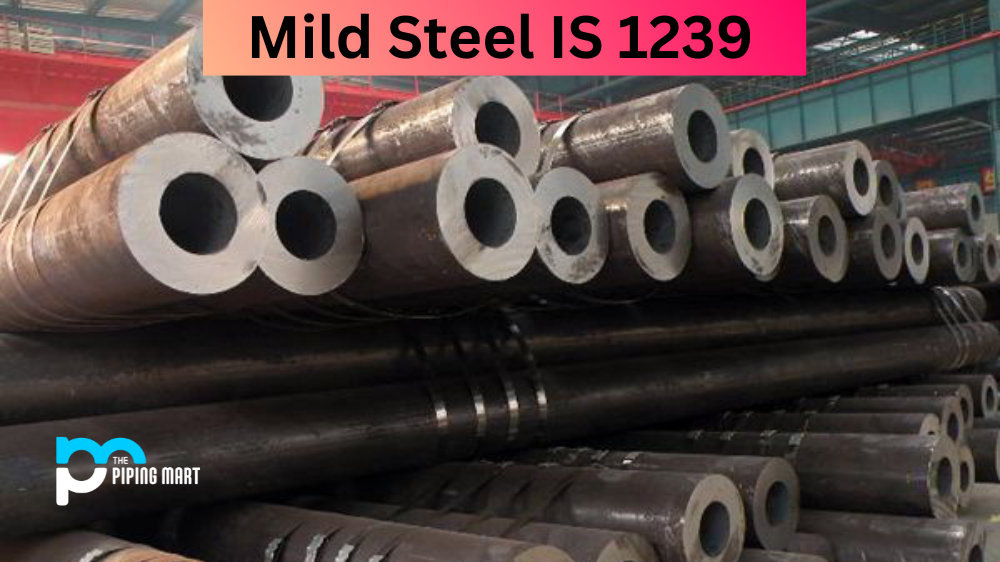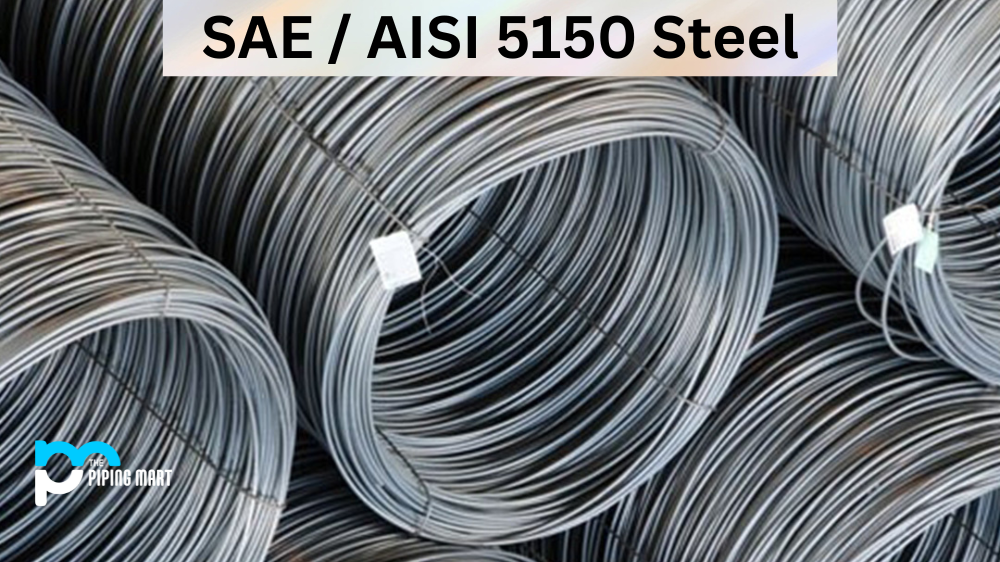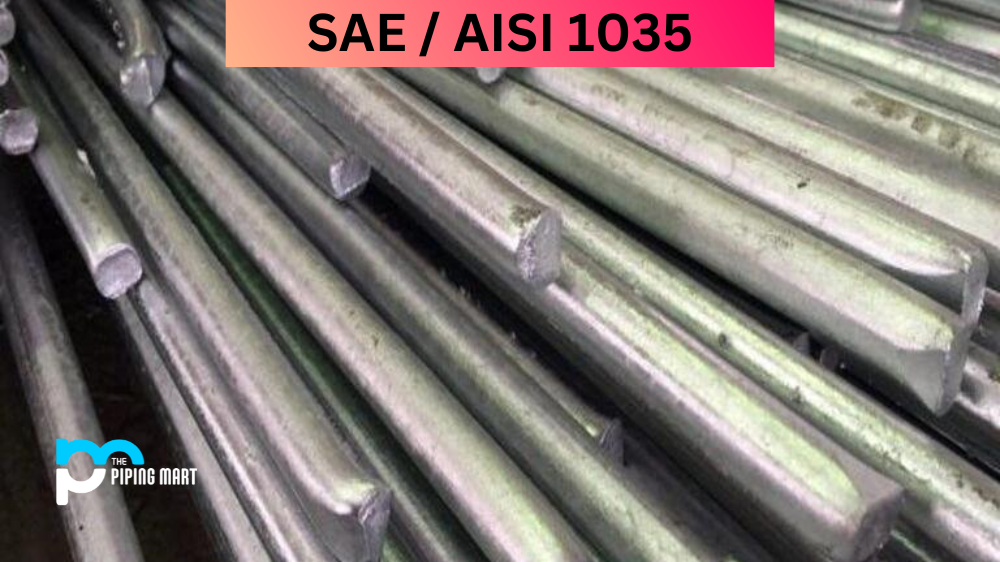SS 430 is an austenitic, ferritic stainless steel. It has excellent corrosion resistance, making it an ideal material for many industrial applications. Let’s take a closer look at the properties and uses of this versatile metal alloy.
What Is 430 Stainless Steel?
430 stainless steel is ferritic stainless steel that contains between 16% and 18% chromium and between 0.5% and 2% nickel content by weight. It has excellent corrosion resistance in mildly corrosive environments and high heat tolerance up to 815°C (1499°F). It also has good mechanical properties, with a tensile strength of up to 550 MPa (79,775 psi) and a yield strength of up to 350 MPa (50,775 psi). This makes it an ideal alloy for many applications requiring high temperature or corrosion resistance.
What Forms is 430 Stainless Steel Available at Piping Mart?
- Bar
- Bolt
- Pipe
- Screw
- Tubing
- Valves
- Washers
- Flanges
- Fasteners
- Electrodes
- Stud Bolts
- Sheet Plates
- Pipe Fittings
430 Stainless Steel Chemical Composition
UNS S43000, an alloy that contains a unique chemical composition. This grade of stainless steel is composed of a combination of iron and chromium, along with small amounts of silicon, nickel, manganese, and other components to create a strong material for construction projects. With its high corrosion resistance, durability, and excellent heat resistance, 430 stainless steel are perfect for many applications such as kitchen appliances and automotive parts. Its superior properties make it an ideal choice to meet your demands for both function and form.
|
GradeN |
C |
Mn |
Si | P | S | Cr | Mo | Ni | N | |
|
430 |
min. max. |
– 0.12 |
– 1 |
– 1 |
– 0.04 |
– 0.030 |
16 18 |
– |
– 0.50 |
– |
430 Stainless Steel Physical Properties
430 stainless steel is a popular grade due to its high corrosion resistance and superior durability. With its high chromium content, it is highly resistant to oxidation and pitting, making it an ideal choice for applications in wet or moist environments. In addition, its relatively low cost makes it a desirable option for many industries. Even with moderate exposure to heat over time, 430 stainless steel can maintain good mechanical properties and the appearance. As such, this material is frequently employed in kitchen countertops, food processing equipment, and storage tanks that require fire protection. All these physical properties make 430 stainless steel an excellent choice for many applications.
|
Grade |
Density (kg/m3) |
Elastic Modulus (GPa) |
Mean Coefficient of Thermal Expansion |
Thermal Conductivity |
Specific Heat 0-100°C (J/kg.K) |
Electrical Resistivity (nΩ.m) |
|||
|
0-100°C |
0-315°C |
0-538°C |
at 100°C |
at 500°C |
|||||
|
430 |
7750 |
200 |
10.4 |
11.0 |
11.4 |
26.1 |
26.3 |
460 |
600 |
430 Stainless Steel Mechanical Properties
430 Stainless Steel is an extremely versatile and cost-effective material that offers superior mechanical properties which make it ideal for a wide range of applications. 430 Stainless Steel, in particular, demonstrates surprisingly high levels of tensile strength, fatigue resistance, and toughness when cold-formed and assembled. It possess excellent corrosion resistance due to the presence of chromium, molybdenum, and other alloys which makes it suited for use in a wide range of atmospheric, chemical and industrial environments. Along with having superior formability and workability characteristics 430 stainless steel can also be heat treated for improved strength or hardening. These impressive mechanical properties make inconel sheet an ideal choice for all types of manufacturing throughout the world.
|
rade |
Tensile Strength (MPa) min |
Yield Strength 0.2% Proof (MPa) min |
Elongation (% in 50mm) min |
Hardness |
|
|
Rockwell B (HR B) max |
Brinell (HB) max |
||||
|
430 |
483 |
310 |
22 |
85 |
183 |
430 Stainless Steel Specifications
AMS 5503, AMS 5627, ASTM A176, ASTM A182, ASTM A240, ASTM A268, ASTM A276, ASTM A314, ASTM
A473, ASTM A479, ASTM A493, ASTM A511, ASTM A554, ASTM A580, ASTM A815, ASME SA 176, ASME
SA 182, ASME SA 240, ASME SA A268, ASME SA A276, ASME SA A314, ASME SA A473, ASME SA A479,
ASME SA A493, ASME SA A511, ASME SA A554, ASME SA A580, ASME SA A815
430 Stainless Steel Properties
Corrosion Resistant
One of the essential properties of 430 stainless steel is that it is highly corrosion-resistant. It will not rust or tarnish easily, making it ideal for many applications.
Heat Resistant
Another important property of 430 stainless steel is that it is heat resistant. This means that it can withstand high temperatures without losing its shape or becoming damaged.
Durable
In addition to being corrosion-resistant and heat-resistant, 430 stainless steel is also very durable. It will not scratch or dent easily, making it ideal for various applications.
Easy to Clean
Another advantage of 430 stainless steel is that it is very easy to clean. This means that you won’t have to spend much time or effort cleaning it, making it ideal for use in various applications.
Versatile
One of the most versatile types of stainless steel, 430 stainless steel can be used in various applications. This includes everything from kitchen appliances to medical equipment.
430 Stainless Steel Equivalent
|
Grade |
UNS No |
Old British |
Euronorm |
Swedish SS |
Japanese JIS |
||
|
BS |
En |
No |
Name |
||||
|
430 |
S43000 |
430S17 |
60 |
1.4016 |
X8Cr17 |
2320 |
SUS 430 |
430 Stainless Steel Uses
This versatile stainless steel can be used for various applications, including automotive components, kitchen appliances, cookware, cutlery, outdoor furniture, and lighting fixtures. Its high heat tolerance makes it suitable for industrial ovens and heat exchangers. Additionally, its non-magnetic nature makes it useful for medical equipment like MRI scanners. Lastly, due to its low cost compared to other grades of stainless steel, it can be used in decorative items such as wall panels or door handles.
Used in the food and beverage industry
UNS S43000 Material is often used in the food and beverage industry. It is commonly used in the production of kitchenware, such as pots and pans, as well as in the production of appliances, such as dishwashers and refrigerators. Additionally, 430 stainless steel is often used to produce food processing equipment, such as mixers and blenders.
Used in the construction industry
430 stainless steel is also used in the construction industry. It is commonly used to produce structural components, such as beams and columns. Additionally, 430 stainless steel is often used to make construction tools and equipment, such as power drills and saws.
Used in the automotive industry
430 stainless steel is also used in the automotive industry. It is commonly used in the production of exhaust systems, as well as in the production of body panels and trim. Additionally, 430 stainless steel is often used to produce engine components, such as valves and connecting rods.
Used in the medical industry
430 stainless steel is also used in the medical industry. It is commonly used in the production of surgical instruments, as well as in the production of medical implants. Additionally, 430 stainless steel is often used in dental implants and prosthetics production.
Used in the electronics industry
SS 430 is also used in the electronics industry. It is commonly used in the production of electrical enclosures, as well as in the production of circuit boards and electronic components. Additionally, 430 stainless steel is often used in shielding applications to protect sensitive electronic components from electromagnetic interference (EMI).
430 Stainless Steel Welding
430 stainless steel is relatively easy to weld with the right equipment. However, due to its high thermal conductivity, it is important to use high-quality welding rods designed specifically for welding this metal alloy. Also, make sure your welding machine is properly adjusted to get the correct amperage; too much amperage may cause burn-throughs, while too little will cause weak welds that will not hold up under stress or strain. Additionally, preheat the workpiece before welding and keep the area clean throughout the process; any dirt or debris on the surfaces can weaken the weld joint.
Conclusion:
430 stainless steel is an incredibly versatile metal alloy with excellent corrosion resistance and heat tolerance making it suitable for various applications from automotive components to MRI scanners. It’s relatively easy to weld with the right equipment but should always be done carefully so as not to damage or weaken the weld joint in any way. All these great properties and its relatively low cost compared to other grades of stainless steel make it an ideal choice for numerous projects, both small & large scales alike!

Meet Bhavesh, a seasoned blogger with a wealth of knowledge and experience. From metal products manufacturing to retail, Bhavesh has a diverse background in various industries and is dedicated to sharing his insights and expertise with readers.




